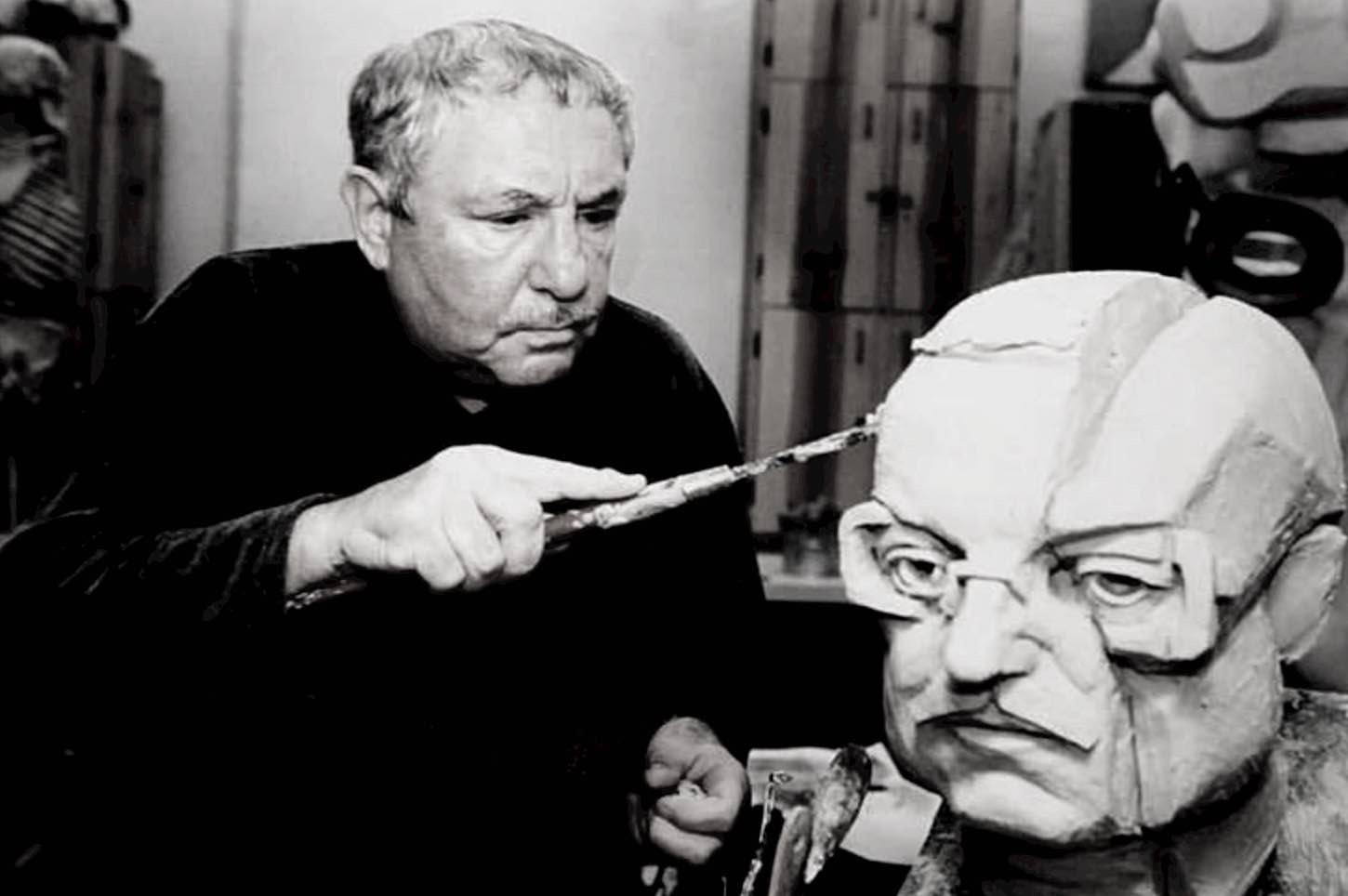 Ernst Neizvestny
Ernst Neizvestny
( 09.04.1925 - 9.08.2016)
Ernst Iosifovich Neizvestny born on 9 April 1925 in Sverdlovsk.
He is a famous Russian-Jewish sculptor of the second half of the 20th century. He currently lives and works in New York City.
His parents, Jews, were purged in the 1930s. At the age of 17, Neizvestny joined the Red Army as a volunteer. At the close of World War II, he was heavily wounded and sustained a clinical death. Although he was awarded the Order of the Red Star "posthumously" and his mother received an official notification that her son had died, Neizvestny managed to survive.
In 1947, Neizvestny was enrolled at the Academy of Arts in Riga. He continued his education at the Surikov Moscow Art Institute and the Philosophy Department of the Moscow State University. His sculptures, often based on the forms of the human body, are noted for their expressionism and powerful plasticity. Although his preferred material is bronze, his larger, monumental installations are often executed in concrete. Most of his works are arranged in extensive cycles, the best known of which is The Tree of Life, a theme he has developed since 1956.
Although Nikita Khrushchev famously derided Neizvestny's works as degenerate art at the Moscow Manege exhibition of 1962 ("Why do you disfigure the faces of Soviet people?"), the sculptor was later approached by Khruschev's relatives to construct a tomb for the former Soviet leader at the Novodevichy Cemetery. Other well-known works he created during the Soviet period are Prometheus in Artek (1966) and the Lotus Flower at the Aswan Dam in Egypt (1971). In 1976, he moved from the USSR to Switzerland.
During the 1980s, Neizvestny was a guest lecturer at the University of Oregon and at UC Berkeley. He also worked with Magna Gallery in San Francisco, and had a number of shows which were well-attended in the mid 1980s. This gallery also asked him to create his "Man through the Wall" series to celebrate the end of Communism at the end of the 1980s. He subsequently ended his relationship with the gallery.
In 1996, Neizvestny completed his Mask of Sorrow, a 15-meter tall monument to the victims of Soviet purges, situated in Magadan. The same year, he was awarded the State Prize of the Russian Federation. Although he still lives in New York City and works at Columbia University, Neizvestny frequently visits Moscow and celebrated his 80th birthday there. A museum dedicated to his sculptures was established in Uttersberg, Sweden. Some of his crucifixion statues were acquired by John Paul II for the Vatican Museums.
In 2004 Neizvestny became an honorary member of the Russian Academy of Arts.
Numerous key galleries and museums such as Sovcom Gallery have featured Ernst Neizvestny's work in the past.Ernst Neizvestny's work has been offered at auction multiple times, with realized prices ranging from 117 USD to 87,722 USD, depending on the size and medium of the artwork. Since 2003 the record price for this artist at auction is 87,722 USD for Heads, sold at Christie's South Kensington in 2007. Ernst Neizvestny has been featured in articles for Art Reveal Magazine, The Art Newspaper and Deutsche Welle. The most recent article is Iconic Nesterov Heads Bonhams Russian Sale in London written for ArtDaily in October 2020.